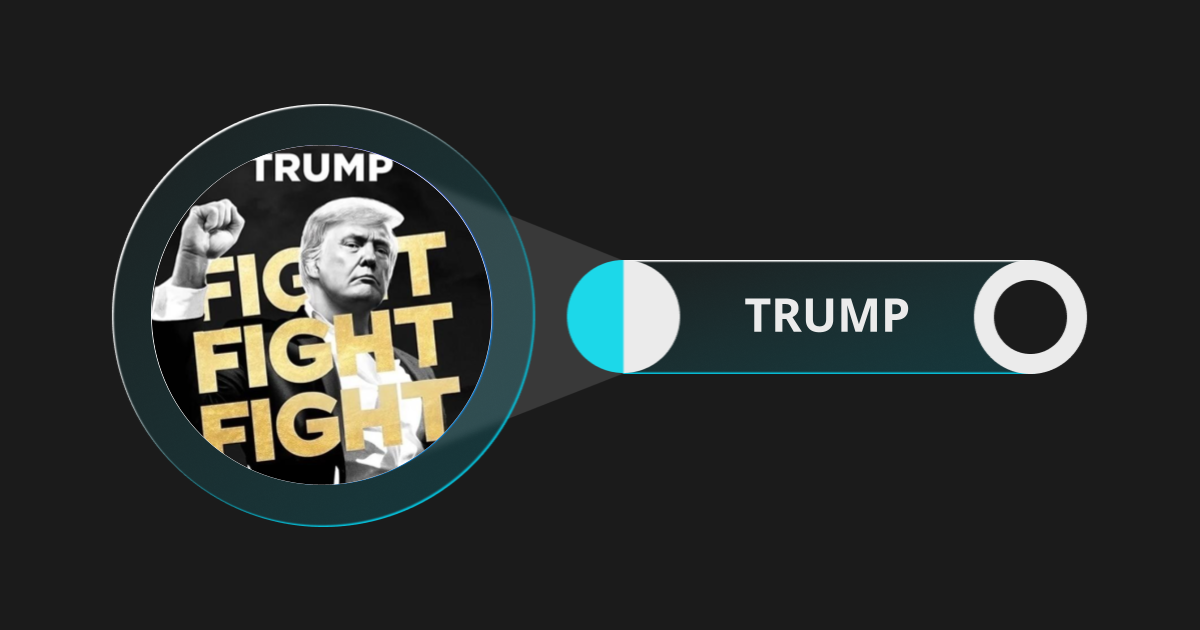
What is a Crypto ETF? Your Comprehensive Guide to Crypto ETF
TL;DR
- Crypto ETFs are exchange-traded funds (ETFs) that track the price of one or more cryptocurrencies.
- Three main types of crypto ETFs: physically-backed, synthetic-backed, and crypto-adjacent.
- Currently in the US, only synthetic-backed and crypto-adjacent ETFs are allowed by the SEC. Several firms are trying to get permission to offer physically-backed ETFs.
- While crypto ETFs offer investors a simplified way to gain exposure to the crypto market without delving into the technical intricacies, it's important to acknowledge certain drawbacks such as tracking error or limitations in accessing the benefits of DeFi.
What are Crypto ETFs?
Before getting to crypto ETFs, we need to know what ETFs are.
In simple terms, an ETF, or exchange-traded fund in full, is an investment fund that lets you buy a large basket of assets, which could include stocks, bonds, commodities, or even alternative assets such as real estate or cryptocurrencies, in one purchase. ETF is designed to mirror the performance of a specific index, sector, or asset class, and can be traded on stock exchanges just like individual stocks. These funds also function much like common stocks, as their prices can vary within a day based on investor sales or purchases. Basically, ETF combines the best features of indexes and stocks, offering investors exposure to a diversified portfolio of assets at regularly updated prices.
Crypto ETFs, unlike traditional ETFs that track indexes or various assets, specifically track the price of one or more cryptocurrencies. On the other hand, similar to how traditional ETFs work, crypto ETF prices may fluctuate several times during the day depending on trading activities. Crypto ETFs provide an excellent alternative solution for those interested in cryptocurrencies but hesitant to manage the relatively new form of assets themselves.
In 2021, the first crypto ETF ever released was the Purpose Bitcoin ETF (BTCC) in Canada. This is an ETF that tracks BTC spot prices.
Types of Crypto ETFs
Crypto ETFs come in three main types: physically-backed, synthetic-backed, and crypto-adjacent.
The first type, physically-backed ETFs, involves an investment firm that manages the fund and purchases actual cryptocurrencies. The ownership of these coins is then represented as shares in the ETF. By purchasing shares in the ETF, investors indirectly own the underlying cryptocurrencies. This approach allows individuals to gain exposure to digital assets without the costs and risks associated with owning them directly.
On the other hand, synthetic-backed ETFs are a variant that tracks cryptocurrency derivatives such as futures contracts and other cryptocurrency exchange-traded products (ETPs). For instance, some ETFs proposed to the U.S. Securities and Exchange Commission (SEC) track the prices of BTC futures contracts traded at the Chicago Mercantile Exchange (CME). In this case, the ETF's share price mirrors the price movements of these derivatives, rather than the actual cryptocurrencies themselves.
The third type of crypto ETF is known as an crypto-adjacent ETFs. Unlike other crypto ETFs that track the price of specific cryptocurrencies or use futures contracts, these ETFs focus on investing in stocks of companies involved in the cryptocurrency industry. This approach allows investors to make a broader bet on the future growth of the overall crypto economy, rather than solely relying on the price movements of individual cryptocurrencies like Bitcoin.
How Do Crypto ETFs Work?
Crypto ETFs operate by providing investors with exposure to the cryptocurrency market. As ETFs are traded on stock exchanges, it is regulated by the SEC in the US. Currently, listed crypto ETFs in the US face restrictions that prevent them from directly holding actual cryptocurrencies in their portfolios. Instead, they employ alternative methods to offer investors a pathway into the crypto space. Therefore, it can be said that at the moment, no physically-backed ETFs exist in the US just yet for regulatory reasons. Meanwhile, in other countries, several physically-backed ETFs are available, including Bitcoin ETF (EBIT) in Canada, Purpose Bitcoin ETF (9F31, 9F32, 9F33) in German, and QR Capital’s Bitcoin ETF (QBTC11) in Brazil
One common approach used by crypto ETFs in the US is to utilize crypto futures contracts. These contracts allow investors to speculate on the future price movements of cryptocurrencies without having to own the underlying assets. These synthetic-backed ETFs can track the prices of the futures contracts, which are traded on regulated exchanges such as the CME. As the prices of these futures contracts rise or fall, the ETF's share price follows suit. ProShares Bitcoin Strategy ETF falls into this category.
Another method employed by crypto ETFs such as Bitwise Crypto Industry Innovators ETF (BITQ) is investing in stocks of companies involved in the cryptocurrency industry. These companies can range from crypto mining firms to blockchain technology providers. By holding stocks of these companies, these crypto-adjacent ETFs indirectly gain exposure to the crypto market. The share price of the ETF reflects the performance of the underlying stocks.
Over the past decade, numerous companies in America have made efforts to introduce physically-backed ETFs that directly track the spot price of cryptocurrencies. However, each of these attempts has faced rejection from the SEC. This situation remained discouraging until Blackrock's recent application for a Bitcoin ETF in June 2023. Now, there's a glimmer of hope within the industry that a spot crypto ETF might finally become a reality, and the list of crypto ETFs will substantially enhance in the future.
To get daily updates about crypto ETFs, you can read Bitget Bites here.
Pros and Cons of Investing in Crypto ETFs
While crypto ETFs offer various inherent advantages, it's essential for investors to also consider their drawbacks and conduct thorough research before making investment decisions in order to align their strategies with their financial goals and risk tolerance.
PROS
1. Diversification with generally low costs: Crypto ETFs offer investors the opportunity to diversify their portfolio by gaining exposure to a basket of cryptocurrencies at a relatively low cost, especially when the price of prominent cryptocurrencies such as BTC and ETH are often too high for an average investor.
2. Simplified investment for newcomers: For investors new to the crypto market, ETFs provide an easier entry point. They eliminate the need to navigate the complexities of self-custody and the technical know-how required to transfer cryptocurrencies between different storage methods.
3. No need for managing digital assets: Investors in crypto ETFs don't have to worry about managing digital assets themselves. The ETFs provide exposure to the crypto market without the additional expenses and risks associated with owning and safeguarding cryptocurrencies directly.
4. Boosting liquidity and adoption: For cryptocurrency enthusiasts, ETFs are highly anticipated as they are expected to increase liquidity and promote wider adoption of cryptocurrencies for investment purposes.
5. Easy to trade: Crypto ETFs can be bought and sold at any time of the day on regulated stock exchanges, unlike some other funds that have specific trading periods.
6. Tax efficiency: ETFs typically generate lower capital gain distributions compared to actively managed mutual funds, resulting in potentially more tax-efficient investments.
7. Trading flexibility: ETFs, being traded like stocks, allow investors to utilize various order types such as limit orders or stop-loss orders, offering greater trading flexibility compared to mutual funds.
8. Regulated investment instrument: Crypto ETFs operate within regulatory frameworks, making them relatively safer and more protected investment options compared to trading cryptocurrencies directly.
CONS
1. Added risk with synthetic ETFs: Synthetic-backed ETFs, which rely on derivatives, may carry additional risk due to potential lack of transparency in their operations.
2. Exposure to volatility of underlying asset: Crypto ETFs are still subject to considerable volatility since their value is tied to the underlying cryptocurrency market.
3. Limited benefits compared to owning crypto: Investors in crypto ETFs do not physically own the underlying cryptocurrencies, which means they cannot take advantage of decentralized finance, leverage, or use the crypto for goods and services.
4. Legal limitations: U.S.-listed crypto ETFs are currently restricted from offering direct exposure to cryptocurrencies. They must rely on futures contracts or stocks of crypto-related companies instead.
5. Trading costs: Investing small amounts frequently in ETFs may result in higher trading costs compared to investing directly.
6. Illiquidity: Some thinly traded ETFs may have wide bid/ask spreads, resulting in higher costs for investors when buying or selling shares.
7. Tracking error: Although ETFs generally track their underlying index well, technical issues can occasionally lead to discrepancies in tracking performance.
8. Settlement dates: ETF sales are not settled immediately, and it takes two days for funds from a sale to be available for reinvestment, potentially causing a delay in deploying capital.
Concluding Thoughts
Crypto ETFs offer a simplified and regulated approach for individuals to enter the crypto space without the complexities of managing digital assets themselves. As the popularity of cryptocurrencies continues to grow, these funds provide a convenient investment vehicle for those seeking exposure to the digital currency market.
It's important to note that while crypto ETFs provide exposure to the crypto market, they are different from investing in cryptocurrencies directly. Investors should carefully evaluate the risks and benefits associated with these funds and consider their investment goals and risk tolerance.
 Disclaimer: The opinions expressed in this article are for informational purposes only. This article does not constitute an endorsement of any of the products and services discussed or investment, financial, or trading advice. Qualified professionals should be consulted prior to making financial decisions.
Disclaimer: The opinions expressed in this article are for informational purposes only. This article does not constitute an endorsement of any of the products and services discussed or investment, financial, or trading advice. Qualified professionals should be consulted prior to making financial decisions.



